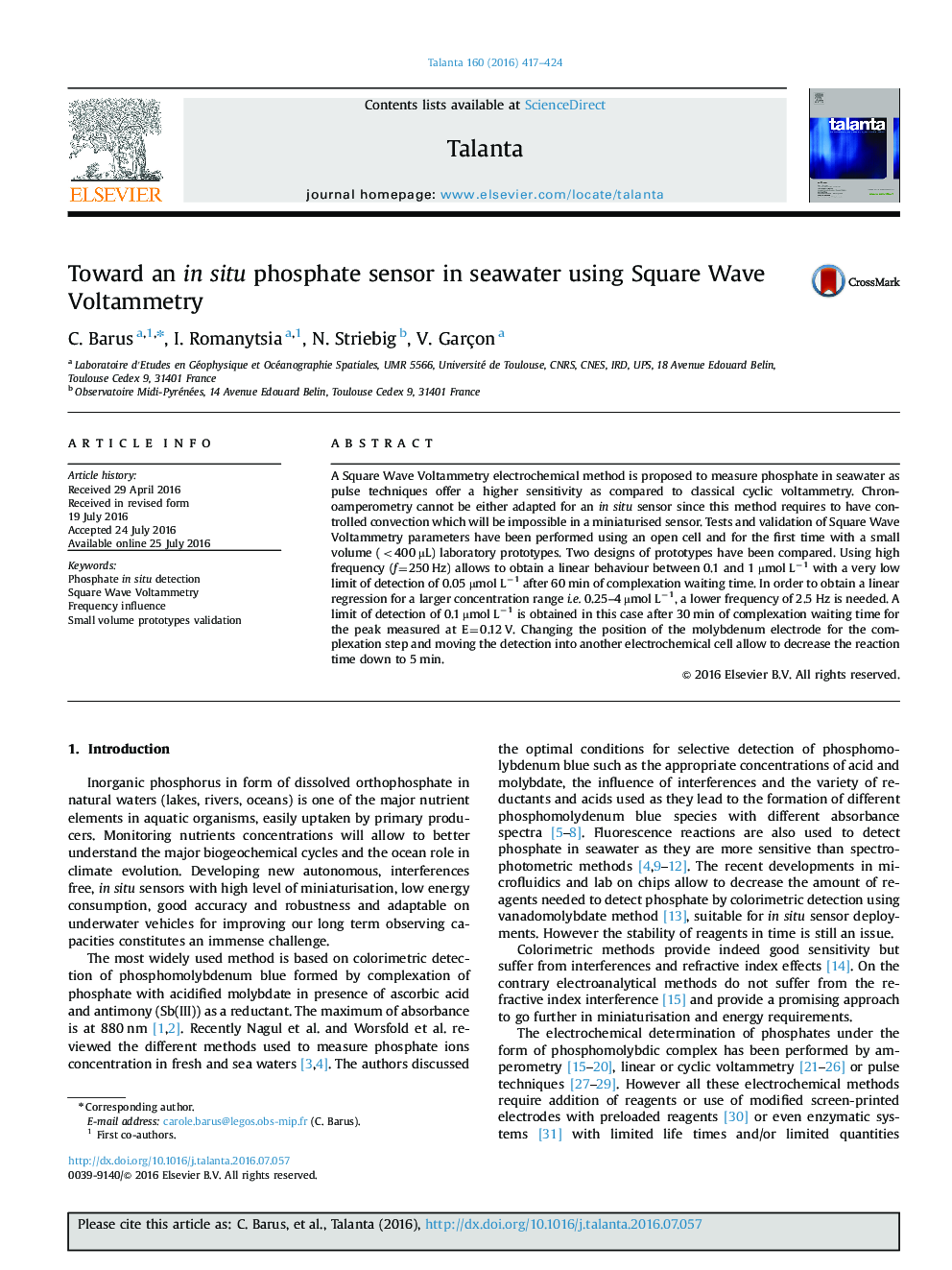| Article ID | Journal | Published Year | Pages | File Type |
|---|---|---|---|---|
| 1243276 | Talanta | 2016 | 8 Pages |
•Square Wave Voltammetry successful in measuring phosphate concentration in seawater.•Study of frequency dependency on phosphate calibration.•Electrochemical parameters validation with miniaturised laboratory sensor prototypes.
A Square Wave Voltammetry electrochemical method is proposed to measure phosphate in seawater as pulse techniques offer a higher sensitivity as compared to classical cyclic voltammetry. Chronoamperometry cannot be either adapted for an in situ sensor since this method requires to have controlled convection which will be impossible in a miniaturised sensor. Tests and validation of Square Wave Voltammetry parameters have been performed using an open cell and for the first time with a small volume (<400 µL) laboratory prototypes. Two designs of prototypes have been compared. Using high frequency (f=250 Hz) allows to obtain a linear behaviour between 0.1 and 1 µmol L−1 with a very low limit of detection of 0.05 µmol L−1 after 60 min of complexation waiting time. In order to obtain a linear regression for a larger concentration range i.e. 0.25–4 µmol L−1, a lower frequency of 2.5 Hz is needed. A limit of detection of 0.1 µmol L−1 is obtained in this case after 30 min of complexation waiting time for the peak measured at E=0.12 V. Changing the position of the molybdenum electrode for the complexation step and moving the detection into another electrochemical cell allow to decrease the reaction time down to 5 min.
Graphical abstractFigure optionsDownload full-size imageDownload as PowerPoint slide
